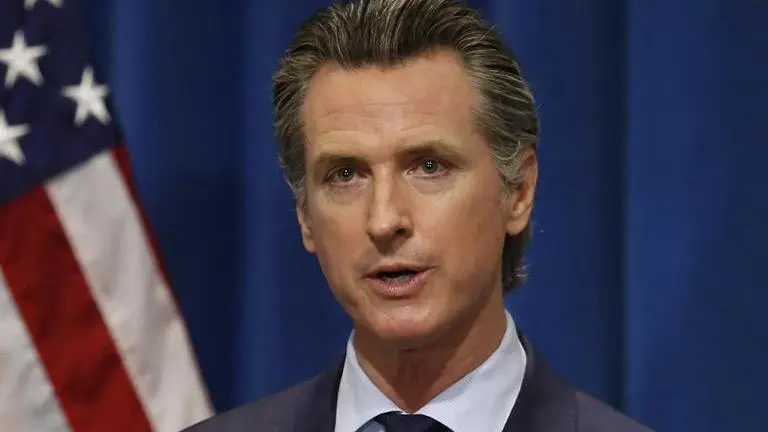Updated 23 June 2020 at 05:49 IST
California governor, lawmakers agree how to close deficit
California will make up its estimated $54.3 billion budget deficit in part by delaying payments to public schools and imposing pay cuts on state workers, according to an agreement announced Monday by Gov. Gavin Newsom and legislative leaders.
- World News
- 5 min read

California will make up its estimated $54.3 billion budget deficit in part by delaying payments to public schools and imposing pay cuts on state workers, according to an agreement announced Monday by Gov. Gavin Newsom and legislative leaders.
The agreement avoids billions of dollars in permanent cuts to public schools and health care programs, including proposals from Newsom that would have made fewer low-income older adults eligible for government funded health insurance and would have eliminated programs aimed at keeping people out of nursing homes where the coronavirus has spread with deadly consequences.
Instead, the agreement would make up the deficit in part by imposing $2.8 billion in pay cuts to state workers and delaying roughly $12 billion in payments to public schools to future years. The rest would come from borrowing from some restricted funds that must be paid back, spending cuts to other programs and temporary tax increases on businesses that would bring in $4.4 billion in new revenue.
Some of those cuts and delayed payments would be eliminated if the federal government sends the state more aid by October.
Advertisement
“We’re not solving for everything in one calendar month. We have a lot of work to do over the next few years,” Newsom said. “We cannot impress upon the federal government more (the) important work they have to do to help support municipalities large and small, states large and small, to help support us through this unprecedented period of time.”
In January, California was preparing for a multi-billion budget surplus as it enjoyed record low unemployment. But that changed in March, when Newsom issued a stay-at-home order to slow the spread of the coronavirus. The order forced many businesses to close and millions of people lost their jobs, sending state revenues plummeting.
Advertisement
Details of the budget agreement were not available in writing on Monday, and Newsom declined to discuss specifics during a news conference. But components of the agreement were confirmed by Assembly Budget chair Phil Ting, a Democrat from San Francisco, plus multiple sources in the state legislature and the governor’s office, all of whom asked for anonymity because they were not authorized to discuss the agreement publicly.
“Now was not the right time to cut if we could avoid it,” Ting said. “It’s not a budget you can be pleased (with), but I think it was a budget that protects the right things.”
Delaying about $12 billion in payments to public schools means districts can go ahead and spend the money — either by borrowing or pulling from their reserves — and the state will pay them back later. Doing it that way avoids painful cuts now, but increases the deficit in the next year.
The agreement calls for giving about $4.4 billion in federal coronavirus relief money to public schools to help some students from falling too far behind as they have been home since March because of the coronavirus. That spending would focus on students who are learning English, come from low-income families or are in the foster care system. The agreement also gives schools $1.1 billion in federal money to help with reopening in the fall.
But the proposal does not include a cost-of-living adjustment for schools, essentially ensuring they get roughly the same a mount of state funding they received last year. Normally, this means districts could lay off teachers and other employees to balance their budgets. But the proposal includes language preventing districts from doing that.
“We’ve just got to hope that we have sustained economic growth after COVID,” said Kevin Gordon, a lobbyist representing many public school districts.
The budget has no major cuts to health care programs, protecting optional benefits like dental and vision for low-income people who receive government-funded health insurance. It also ensures that, for the first time, immigrants with at least one child 6 or under who pay pay their taxes with a taxpayer identification number are eligible for a credit that would give them more cash in their state tax refunds.
State workers, however, will have about $2.8 billion in cuts. The two largest employee unions have already agreed to some furloughs, or unpaid days off. But the agreement empowers Newsom to suspend scheduled pay raises and impose up to two furlough days per month for any public union that does not have a collectively bargained agreement in place by July 1.
The proposal must still pass the state Legislature and be signed into law by Newsom. But Monday’s endorsement of the plan by Newsom, Senate President Pro Tempore Toni Atkins and Assembly Speaker Anthony Rendon ensure that will happen.
“To be clear, this budget required some tough decisions and more work remains ahead,” the three said in a joint statement. “But they were necessary steps for keeping California on firm fiscal footing while we continue to meet the COVID-19 challenge.”
Published By : Associated Press Television News
Published On: 23 June 2020 at 05:49 IST
